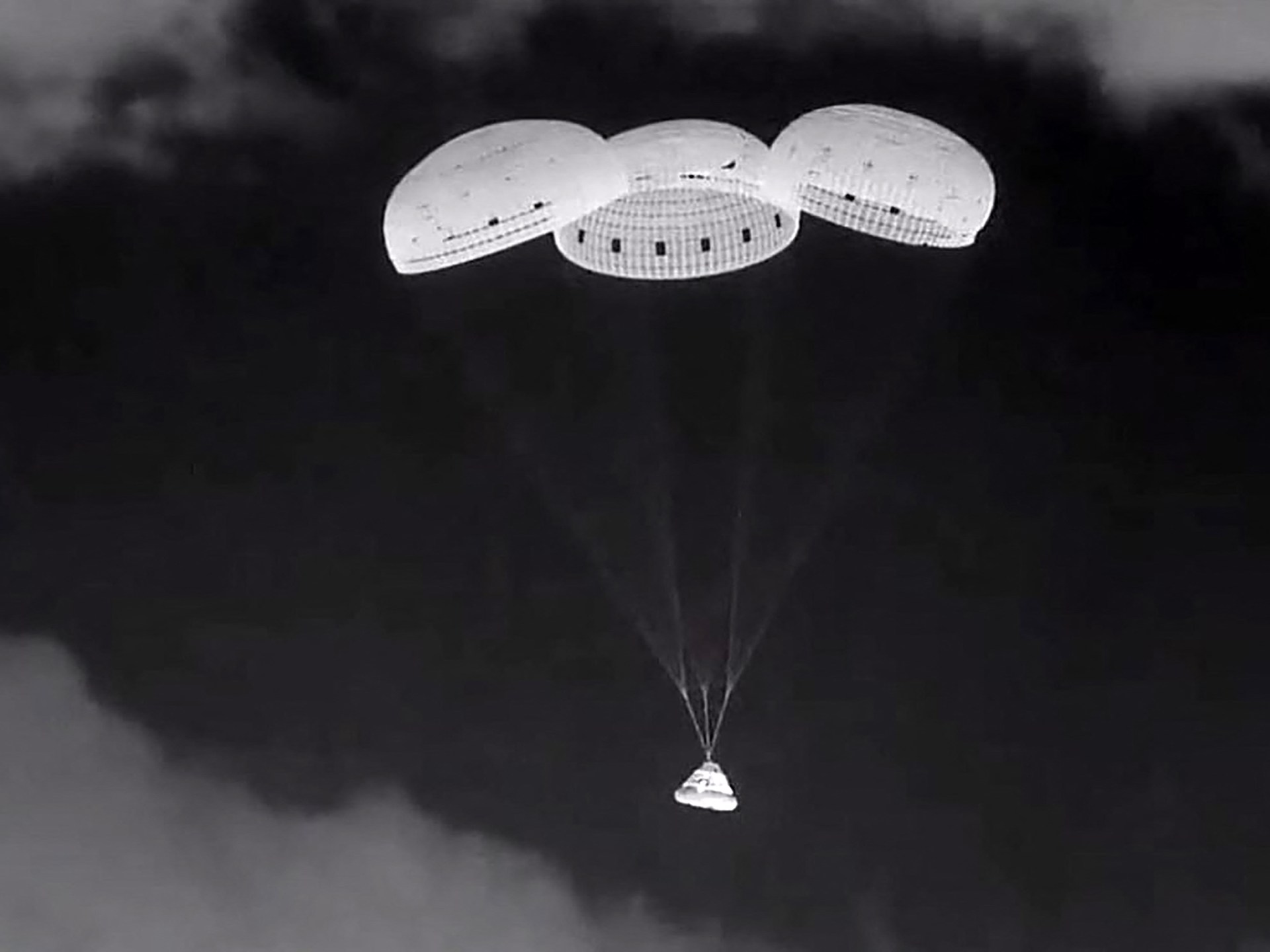Astronauts Butch Wilmore and Suni Williams will remain at the International Space Station until February 2025.
Boeing’s Starliner spacecraft has landed in New Mexico, wrapping up a three-month test mission that faced technical issues and forced it to leave the two astronauts it carried temporarily stranded in space.
The spacecraft touched down at White Sands Space Harbor in the New Mexico desert at 04:01 GMT on Saturday. The two crew members it had flown to space – Butch Wilmore and Suni Williams – remained at the International Space Station (ISS) due to safety concerns with the craft.
They are expected to return to Earth next February.
Starliner’s six-hour trek to Earth concluded seemingly without a hitch, a NASA livestream showed, nailing the critical final phase of its mission despite earlier problems with its thrusters.
The spacecraft re-entered Earth’s atmosphere at about 11pm on Friday (03:00 GMT on Saturday). About 45 minutes later, it deployed a series of parachutes to slow its descent and inflated a set of airbags moments before touching down at the New Mexico spaceport at 12:01am (04:01 GMT).

‘Demoralising’
The mission was intended to be a final test flight before US space agency NASA certifies Starliner for routine missions. However, the agency’s decision to keep astronauts off the capsule over safety concerns has thrown the craft’s certification path into uncertainty, despite the clean return Boeing executed.
Wilmore and Williams, whose mission was initially planned for just eight days, must return to Earth on a vehicle from Boeing’s rival SpaceX, owned by Elon Musk, in February 2025.
“It must be demoralising in a way when you’ve gone expecting to be up there for eight days and suddenly your mission turns into eight months,” Tanya Harrison, a fellow at the University of British Columbia’s Outer Space Institute, told Al Jazeera.
“At the same time this is a highly trained crew that knows that stuff like this can happen … they’re trained, they’re ready,” she said.
During Starliner’s ascent to space in June, with Wilmore and Williams on board, five of the craft’s 28 manoeuvring thrusters failed. The same propulsion system also sprang several leaks of helium, which is used to pressurise the thrusters.
The malfunctions set off an intensive investigation by Boeing – with some help from NASA – that has cost the company $125m.
With its reputation already battered by safety concerns affecting its passenger jets, Boeing assured it could be trusted to bring the astronauts home. But that assessment is not shared by NASA.
“Boeing believed in the model that they had created that tried to predict the thruster degradation for the rest of the flight,” said Steve Stich, programme manager for NASA’s Commercial Crew Programme.
But “the NASA team, due to the uncertainty in the modelling, could not get comfortable with that,” he added, characterising the mood during meetings as “tense”.
Repeated malfunctions
The technical malfunctions are not the first to plague the Starliner during test trips, one of which it failed in 2019. While its re-do mission in 2022 succeeded, some of its thrusters malfunctioned then, too.
The aerospace giant’s Starliner woes have jeopardised its status in space, a domain it had dominated for decades until SpaceX began offering cheaper launches for satellites and astronauts and reshaped the way NASA works with private companies.
Boeing will recover the Starliner capsule after its touchdown and continue its investigation into why the thrusters failed in space.




![Tyson Foods Plant [Photo: Food Manufacturing]](https://southarkansassun.com/wp-content/uploads/2023/08/iStock_1185520857__1_.5e441daa51cca-600x337.jpg)







![Silverado Senior Living Management Inc. [Photo: Los Angeles Times]](https://southarkansassun.com/wp-content/uploads/2023/10/download-6-4-600x337.jpg)

![China's Wuhan Institute of Virology [Photo: Nature]](https://southarkansassun.com/wp-content/uploads/2023/09/d41586-021-01529-3_19239608-600x337.jpg)
















